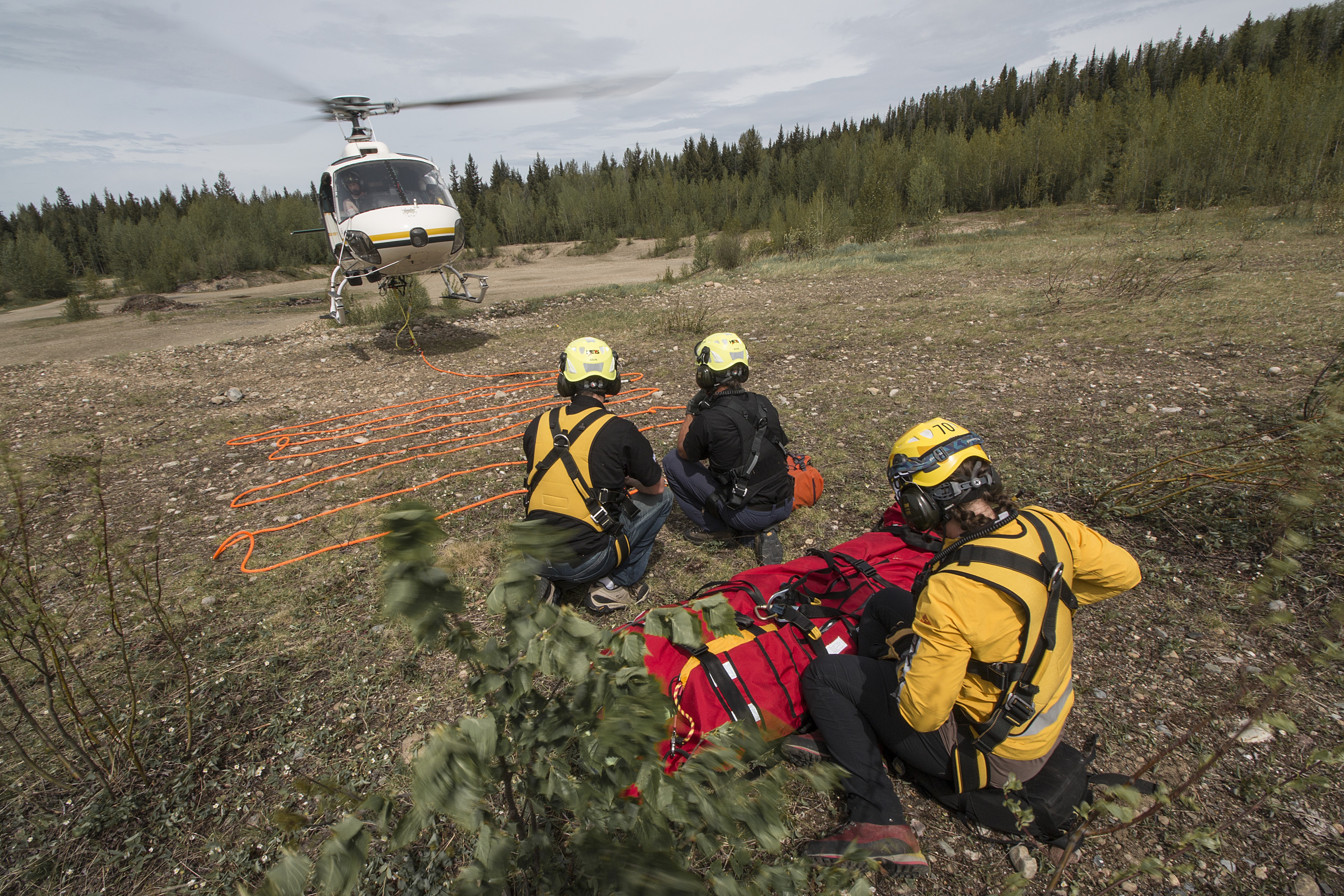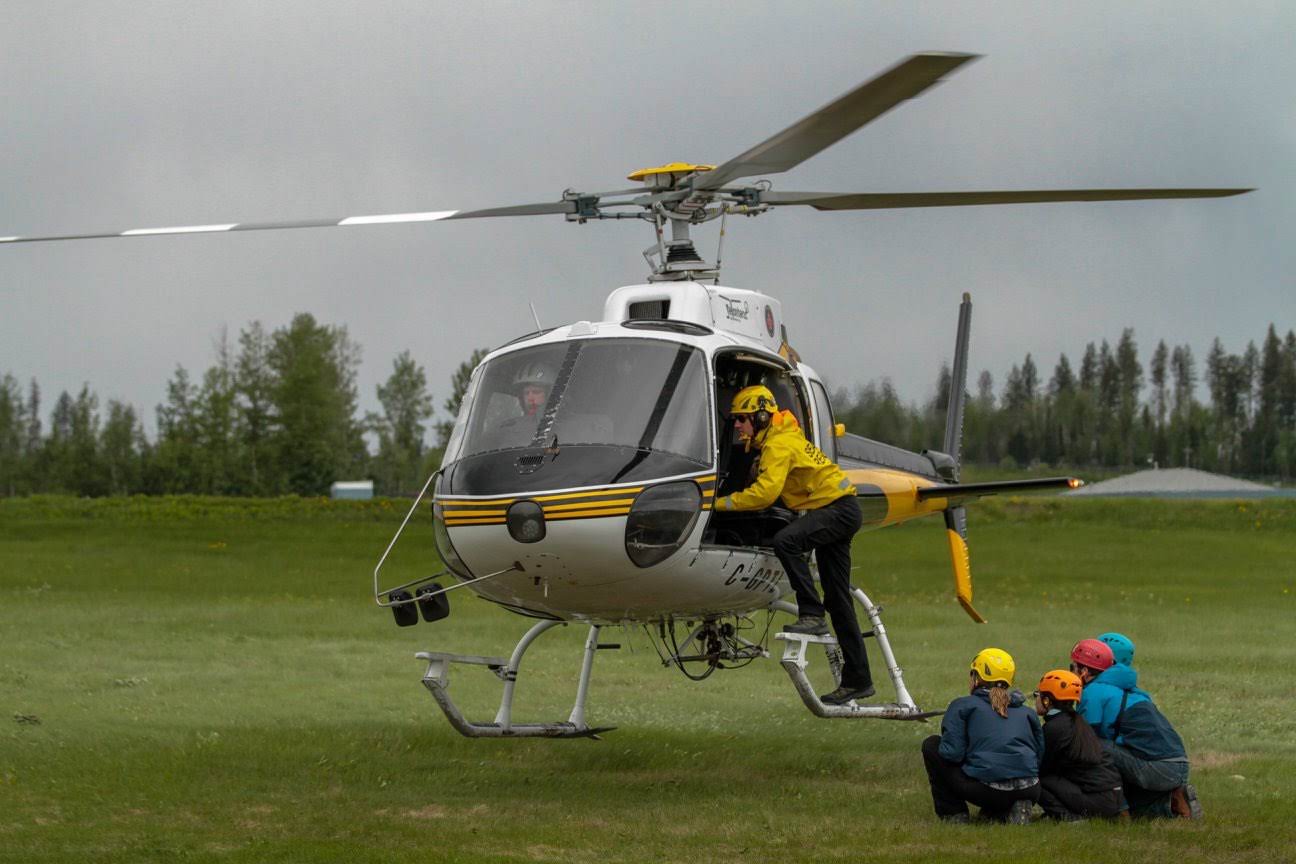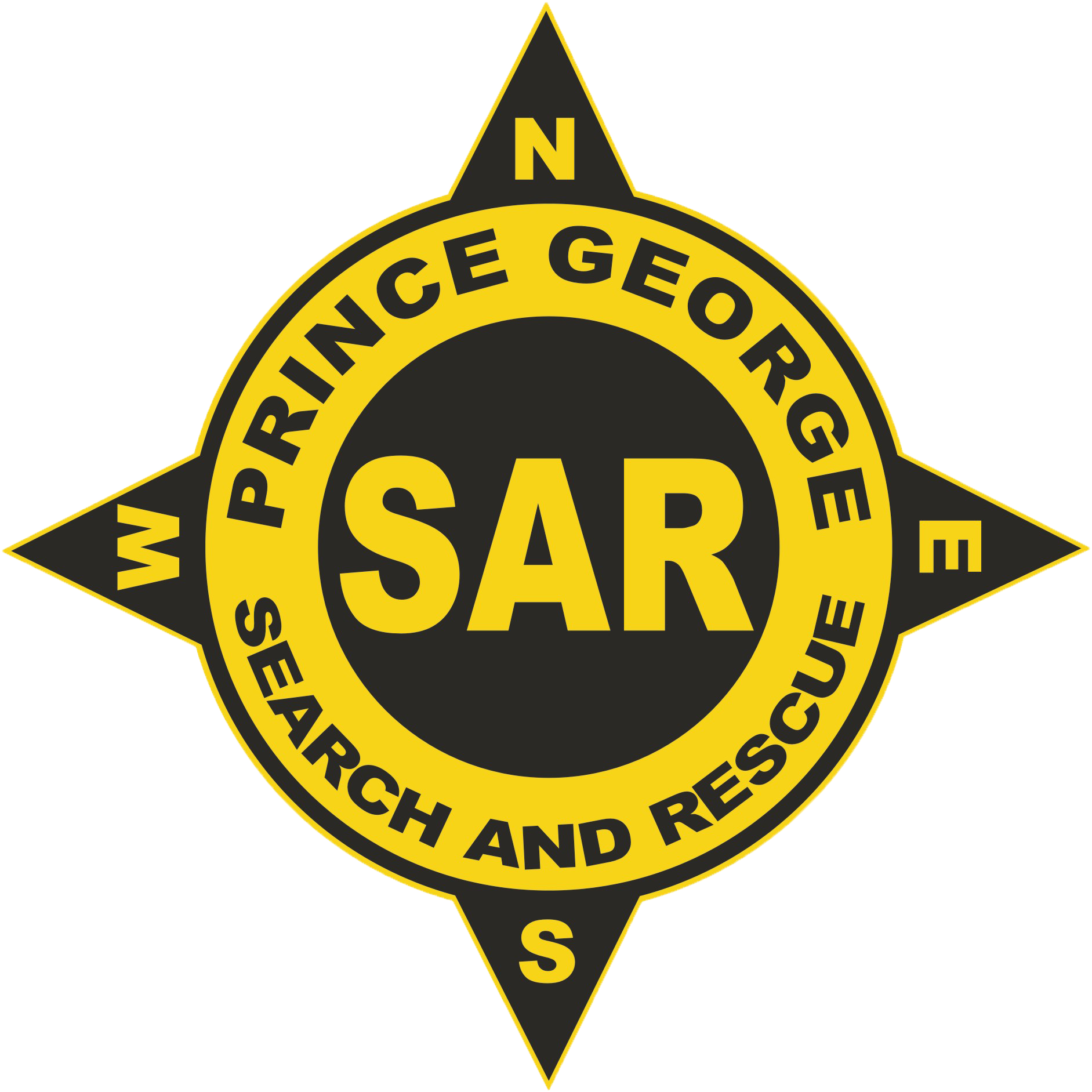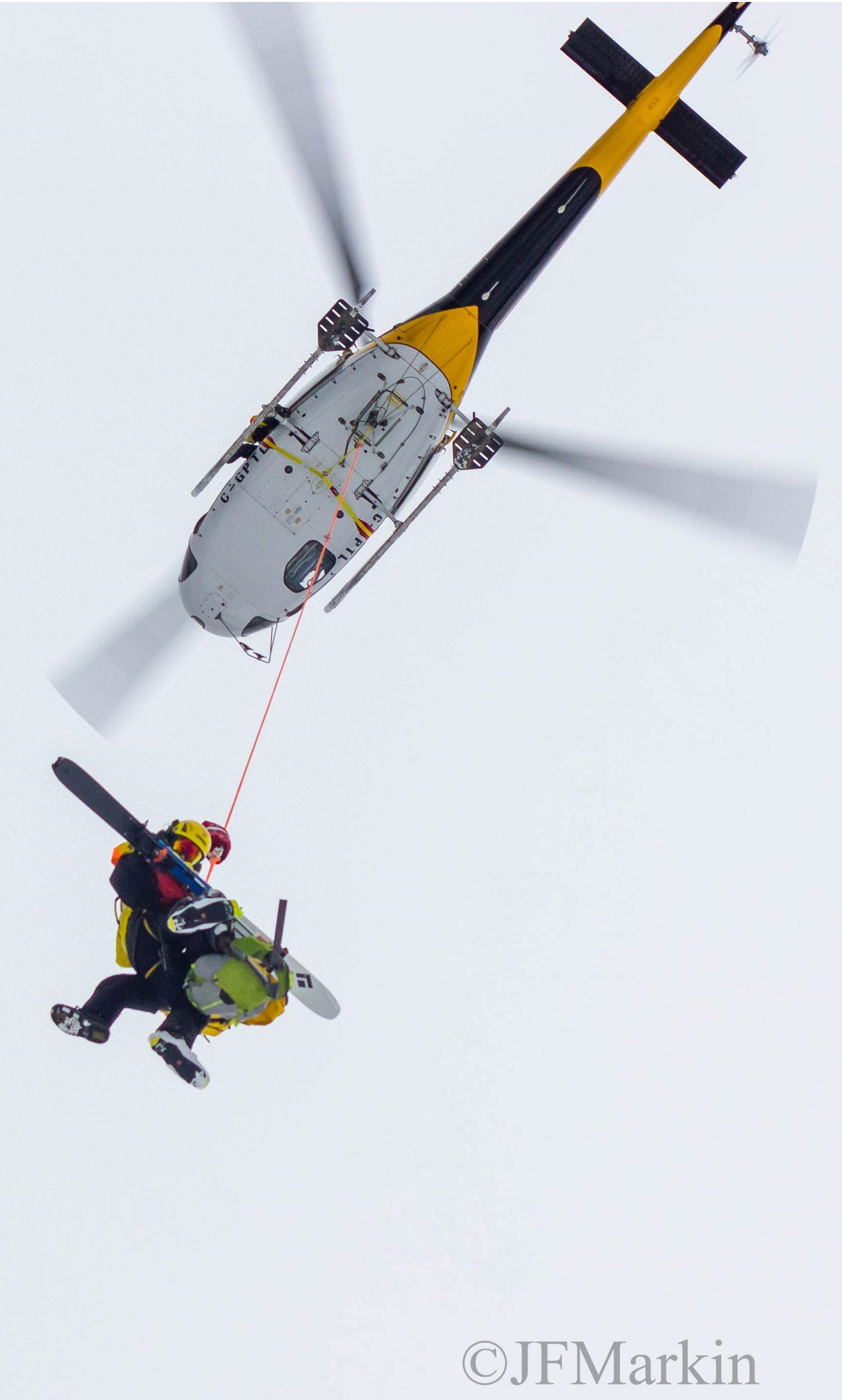Helicopter Operations

Prince George Search and Rescue uses helicopters to decrease response times, access difficult terrain and transport personnel or equipment. Helicopters are typically used in one of four ways:
Personnel and Equipment Transport
When distances to subjects are significant or hard to access by ground, a helicopter will be used to transport personnel and equipment to the area in order to speed up the subject’s rescue. All members of CRSAR have taken a basic helicopter safety orientation with our air carriers to ensure their safety while in and around a helicopter. Sometimes, the terrain does not permit a helicopter to land. In this case, a hover entry/exit or a toe-in may be used. In these situations, the helicopter will hover a few feet above the ground while a SAR member steps out onto the helicopter skid and climbs down onto the ground. They can then move to a safe position away from the helicopter and permit SAR members to exit the aircraft.
Search Assistance
When the search area is very large or has locations which are difficult to fully search from the ground, a helicopter may be used to look for the subject.
Stretcher Transport
Once a subject is located, it is not always possible to get them out safely by ground. They may not be able to walk, or a stretcher carry may be too far or not safe for team members. In this case, a helicopter may be used to
Class D Fixed Line
Prince George Search and Rescue has a CDFL team which uses longline flight equipment and techniques to effect rescues in remote and difficult situations. Members complete regular training with local helicopter pilots. When the CDFL team is used, a rescuer can be suspended on a long line 100-200 feet below the helicopter in a special flight harness. The pilot can then transport the rescuer into an area that makes landing or hover exits impossible (trees, steep mountainsides, etc.).
The subject is placed in a stretcher or harness and attached to the rope along with the rescuer. The helicopter then lifts the attached rescuer and subject and transports them to a suitable location where the helicopter can land, and safe entry into the helicopter can be made. Rescues that previously may have taken several hours by lengthy ground stretcher carry can be completed safely and quickly.


